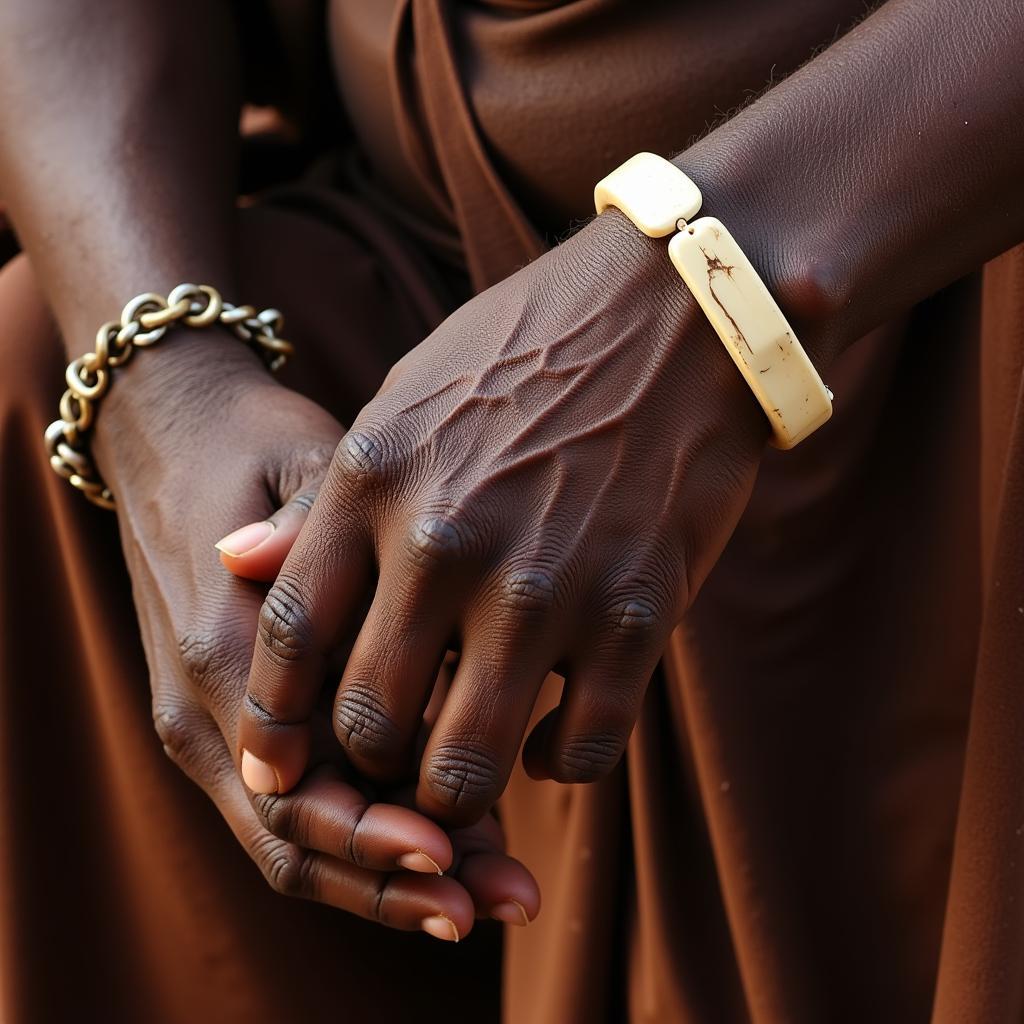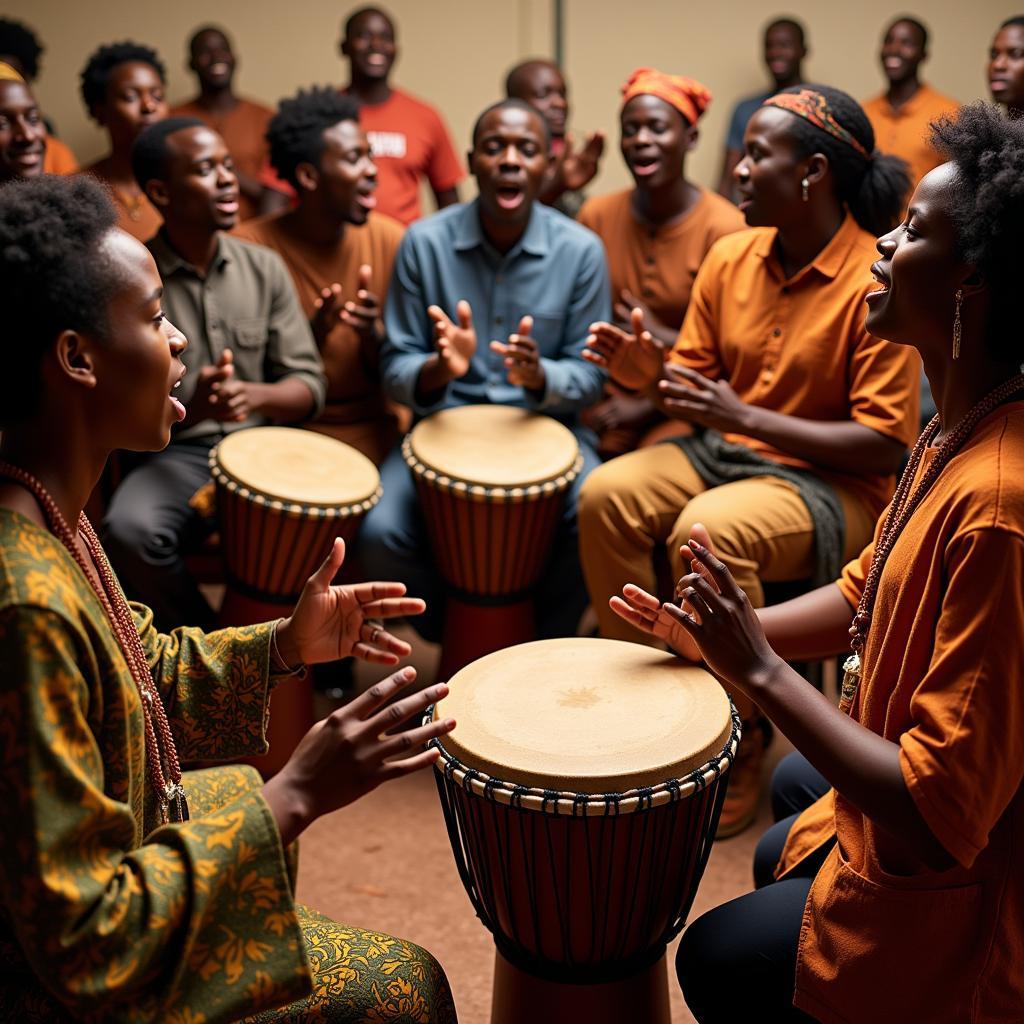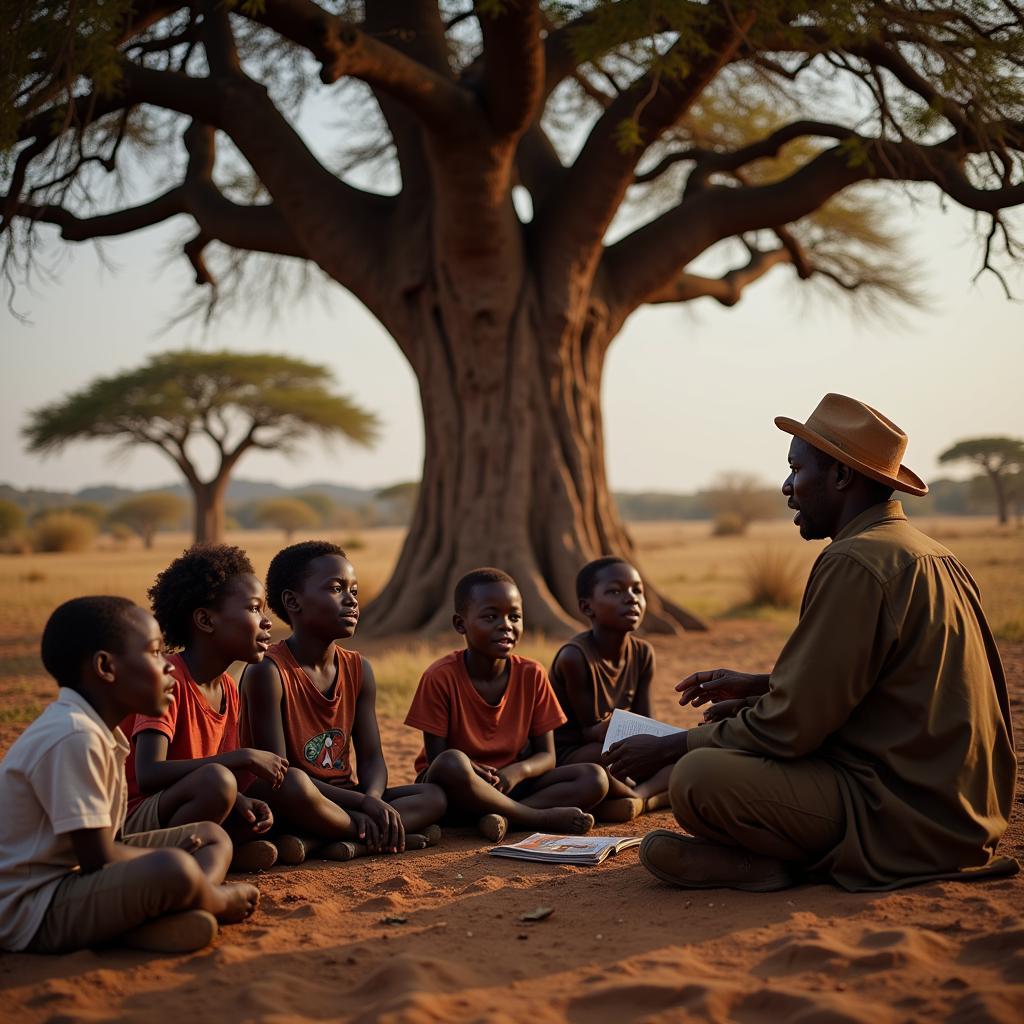The African Buffalo Bull: A Majestic Beast of Power and Presence
The African Buffalo Bull, a formidable creature often referred to as the “Black Death,” is an iconic symbol of Africa’s wild beauty and raw power. These massive bovines, with their impressive horns and unpredictable nature, command respect from both predators and admirers alike. This article delves into the fascinating world of the African buffalo bull, exploring its physical characteristics, social behavior, role in the ecosystem, and the challenges it faces.
A Powerful Physique Built for Survival
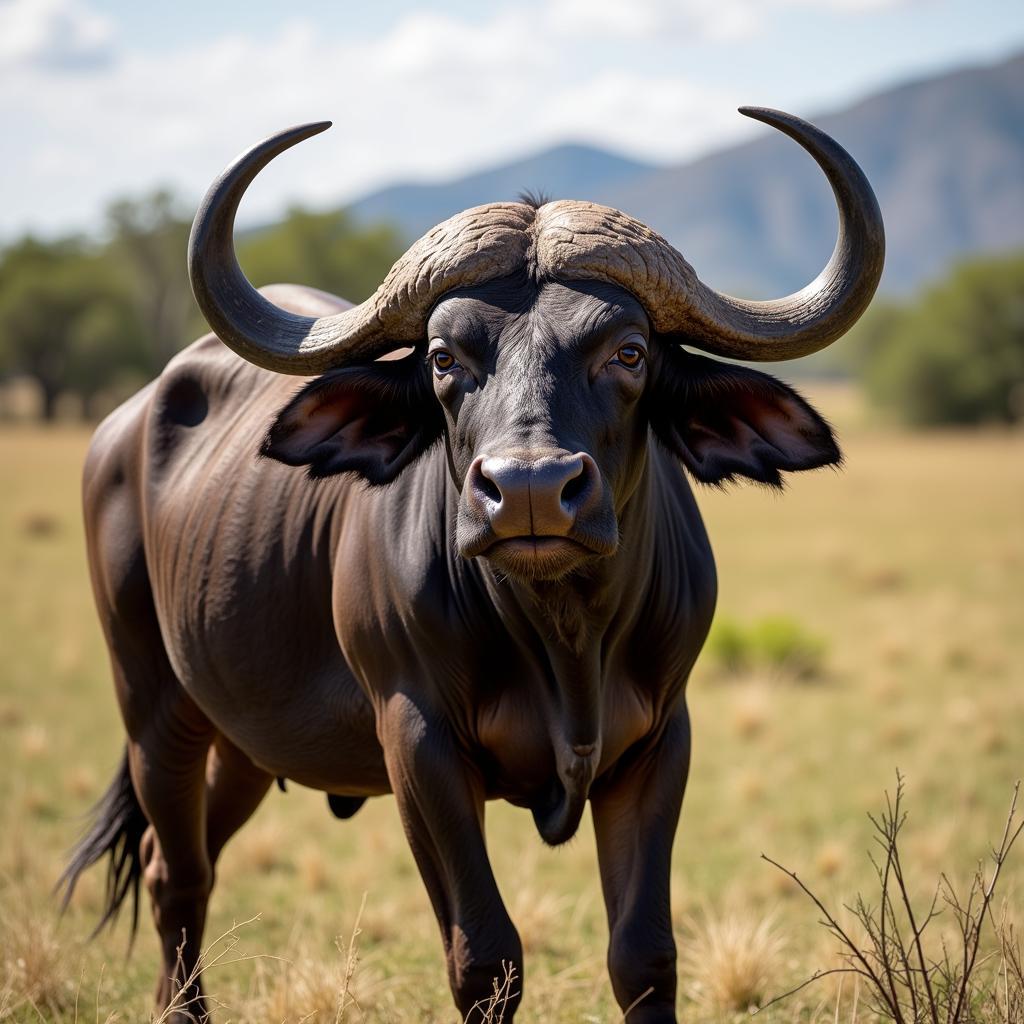 African buffalo bull standing in the savannah
African buffalo bull standing in the savannah
The African buffalo bull is a sight to behold. Bulls are generally larger than females, weighing up to 2,000 pounds and standing over 5 feet tall at the shoulder. Their most striking feature is undoubtedly their horns, which form a massive boss that covers the top of their head. These horns can grow up to 3 feet wide and are used for defense, establishing dominance within the herd, and competing for mates.
Their dark, almost black hide is tough and leathery, providing protection from both predators and parasites. They possess excellent senses, with keen eyesight, a strong sense of smell, and acute hearing, all of which contribute to their survival in the African wilderness.
The Complex Social Structure of Buffalo Herds
African buffalo are highly social animals, living in herds that can range in size from a few dozen to several hundred individuals. The herd structure is complex and hierarchical, with dominant bulls leading the group. These bulls, often older and more experienced, hold a privileged position within the herd, directing movements, accessing the best grazing areas, and mating with females.
Dominance among bulls is established and maintained through a series of displays and physical confrontations, often involving head-butting and shoving matches using their powerful horns. These displays are not just about brute force, however; they also involve complex vocalizations and body language that communicate strength and dominance.
Cows within the herd also have a hierarchy, with older, more experienced females often holding higher ranks. These females play a crucial role in raising calves, guiding the herd, and maintaining social cohesion within the group.
The African Buffalo Bull’s Role in the Ecosystem
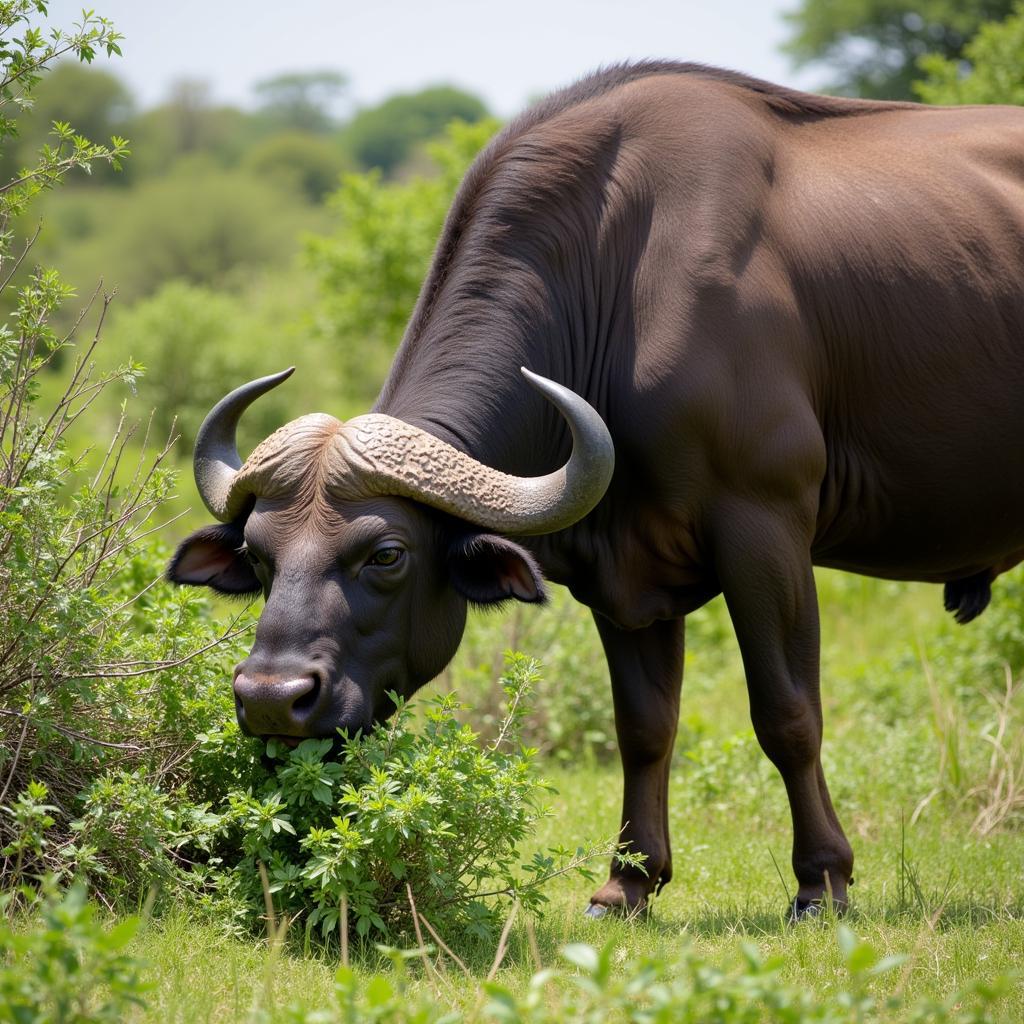 African buffalo bull grazing in the savanna
African buffalo bull grazing in the savanna
As herbivores, African buffalo are a key part of the African savanna ecosystem. They are highly efficient grazers, consuming large quantities of grass and other vegetation. Their grazing habits play a vital role in shaping the landscape, controlling vegetation growth, and influencing the habitat structure for other species.
Their size and strength also make them a significant prey species for large predators like lions and crocodiles. While an individual buffalo can be a challenging target, particularly a large bull, predators often target calves or weaker individuals. The dynamic between predator and prey is a delicate balance, crucial for maintaining a healthy ecosystem.
Threats and Challenges Facing the African Buffalo Bull
Despite their size and strength, African buffalo face numerous threats. Habitat loss due to human encroachment, such as agriculture and infrastructure development, is a growing concern. This loss of habitat can lead to increased competition for resources, making buffalo more susceptible to disease and starvation.
Disease is another significant threat, with outbreaks of rinderpest and bovine tuberculosis having devastating impacts on buffalo populations in the past. Climate change, leading to more frequent and severe droughts, is exacerbating these challenges, further stressing buffalo populations and increasing the risk of disease outbreaks.
Conservation Efforts and the Future of the African Buffalo Bull
Recognizing the importance of the African buffalo, conservation efforts are underway to protect this iconic species. These efforts include habitat preservation, anti-poaching patrols, and research to better understand and address the threats they face.
Community-based conservation initiatives are proving particularly effective, engaging local communities in conservation efforts and promoting sustainable co-existence between humans and wildlife. By working together, we can ensure that the majestic African buffalo bull continues to roam the African savanna for generations to come.
FAQ
Q: How dangerous is an African buffalo bull?
A: African buffalo bulls are extremely powerful and can be incredibly dangerous, especially when threatened. They are known for their unpredictable nature and have been responsible for numerous human fatalities.
Q: What is the difference between an African buffalo bull and a cape buffalo?
A: “African buffalo” and “cape buffalo” are often used interchangeably to refer to the same species, Syncerus caffer. However, there are recognized subspecies with slight variations in size and horn shape.
Q: Do African buffalo bulls attack lions?
A: While lions are known to prey on buffalo, particularly calves and weaker individuals, buffalo, especially bulls, will fiercely defend themselves and their herd. There have been documented cases of buffalo bulls killing or seriously injuring lions.
Explore More About Africa’s Majestic Wildlife
Interested in learning more about the fascinating creatures that inhabit the African continent? Check out these related articles:
For those eager to explore the world of African elephants, delve into the intriguing details of African elephant height in feet. Or, if you’re captivated by the raw power of these magnificent creatures, discover more about African buffalo deadly animals and their place in the ecosystem.
Need Help? Contact Us!
Have questions or need assistance planning your African adventure? Don’t hesitate to contact us!
- Phone: +255768904061
- Email: kaka.mag@gmail.com
- Address: Mbarali DC Mawindi, Kangaga, Tanzania
Our dedicated team is available 24/7 to answer your queries and provide expert guidance. Let us help you create an unforgettable African experience!
